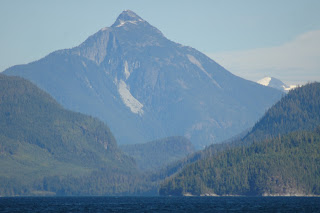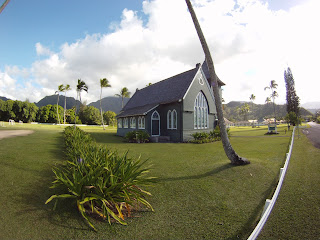 I'm done with the trip! The Blog will remain, but I won't be adding to it often, or at all for a long time. I will continue to sail, continue to keep
Altair, and I'd like to do another trip across the Pacific Ocean, or
further, but for now I am hanging up my dirty captains' hat.
I'm done with the trip! The Blog will remain, but I won't be adding to it often, or at all for a long time. I will continue to sail, continue to keep
Altair, and I'd like to do another trip across the Pacific Ocean, or
further, but for now I am hanging up my dirty captains' hat.
I would like to review the last four
and a half years..
First, I have made a movie of the last bits of the trip when I had a video camera to work with. You may have seen some of the footage before, but maybe not all of it.
First, I have made a movie of the last bits of the trip when I had a video camera to work with. You may have seen some of the footage before, but maybe not all of it.
When I stopped working, I was dreaming
about traveling with the boat, but not brave enough to take the first
step off the continent. Instead I did some small trips around the
Puget Sound to keep my mind off the deep waters. When I finally
decided I was going to confront my fears of the ocean, and set out to
make it to the beginning of the Pacific, I had to go up the Strait of
Juan de Fuca, where I met a strong inflowing wind, which beat me into
a scared submission. But I survived. The nice thing about survival,
I feel, is that you can look back to the time before the event and
realize that you are less scared of it. No longer is a storm an
unknown. This was not really a storm, but it was a lot of wind, and
I suffered a casualty, the loss of my beloved White Knight,
a canoe that I was dragging behind. Still, afterward I could look
back and see that Altair
was undamaged and up to the task of defending me against the
elements.
 Sometimes
I learn best by practicing and then spending time doing something
else for a while, so I headed by car on a trip around the country. I
drove to Rhode Island, to Cape Cod, and down the eastern seaboard,
stopping in historical places, and then landing in Florida, before
working back along the south towards California. When I got to
California, I then flew to Costa Rica for the winter, and came to
miss being aboard the boat, while seeing the wonderful opportunities
that warm water sailing could hold.
Sometimes
I learn best by practicing and then spending time doing something
else for a while, so I headed by car on a trip around the country. I
drove to Rhode Island, to Cape Cod, and down the eastern seaboard,
stopping in historical places, and then landing in Florida, before
working back along the south towards California. When I got to
California, I then flew to Costa Rica for the winter, and came to
miss being aboard the boat, while seeing the wonderful opportunities
that warm water sailing could hold.
I was eager to get the boat to
the warm, so when I got back to Seattle, and Altair, I
then promptly took her north, to Alaska.
 It was a beautiful trip,
because of the extremes. At the glaciers nearly all life is absent;
only the barren rocks and crushed earth can stand the ice, but a
short distance away from them the trees begin and life is
flourishing. My life on water was also brought to an extreme, when I
hit the Sherman Reef, and then pulled the boat off again. I put two
holes in the bottom from the reef, and in my attempt to examine them,
I made another, worse, hole in the side. My trip and my boat and
even my life potentially had come to an edge, and I was forced to
hold to a tight balance in order to get out. But despite the
successful re-floating and patching of the holes, I had fallen out of
love. Altair was no
longer to be trusted.
It was a beautiful trip,
because of the extremes. At the glaciers nearly all life is absent;
only the barren rocks and crushed earth can stand the ice, but a
short distance away from them the trees begin and life is
flourishing. My life on water was also brought to an extreme, when I
hit the Sherman Reef, and then pulled the boat off again. I put two
holes in the bottom from the reef, and in my attempt to examine them,
I made another, worse, hole in the side. My trip and my boat and
even my life potentially had come to an edge, and I was forced to
hold to a tight balance in order to get out. But despite the
successful re-floating and patching of the holes, I had fallen out of
love. Altair was no
longer to be trusted.
I spent
the winter living in Bellingham, with the boat in the bay, and after
a few months I began to work on adding new systems (like LaFawnda),
and over time I found my love and trust had returned.
I had
also done a passage to San Francisco, and discovered the peaceful
side of the Pacific, so I was finally ready, when spring came, to
launch on a long trip.
I left
in May with my father, on a trip down the coast and that was
successful and easy, so I did the next part alone. When I finally
got to Mexico I dabbled on a solo overnight trip.
It was
surprisingly easy! My confidence in my solo sailing built over the
next year in Mexico and I was ready the next May for a longer trip.
I then
set off for Hawaii, toured the islands, and now have returned.
Alone.


All
told, I have sailed 18,754 nautical miles in the last 4.5 years.
That's more than 21,500 regular miles.
I burned
279 gallons of Diesel, for an average of 77.3 miles per gallon.
And I
spent $14,500 for the boat part of the trip. That is purchase,
insurance, repair, haul outs (three), storage in Mexico, fuel, parts
and love.
 I
want to go over the price part more, because I believe that many
people have the dream to go out sailing but are putting off the
departure because they don't have the cash. I am a firm believer in
small boats, and for the price of my trip (I didn't include the food
price, because I eat cheaply, but others may not) you could not even
buy a larger boat. I was looking at a beautiful 36 ft boat for
$55,000, but if I had gone through with it, I wouldn't have gone. So
if you want to sail around, I recommend this: Get a small boat, the
smallest that you can possibly stand. Get it cheap, then check the
most basic things on it, like the mast will stay up and the sails are
ok and the engine starts (that one is more optional) and then untie
it from the dock and start out on an adventure. For $30,000, I
believe that you can get a boat and sail across the pacific or around
the world (if you hurry), for 3 years.
I
want to go over the price part more, because I believe that many
people have the dream to go out sailing but are putting off the
departure because they don't have the cash. I am a firm believer in
small boats, and for the price of my trip (I didn't include the food
price, because I eat cheaply, but others may not) you could not even
buy a larger boat. I was looking at a beautiful 36 ft boat for
$55,000, but if I had gone through with it, I wouldn't have gone. So
if you want to sail around, I recommend this: Get a small boat, the
smallest that you can possibly stand. Get it cheap, then check the
most basic things on it, like the mast will stay up and the sails are
ok and the engine starts (that one is more optional) and then untie
it from the dock and start out on an adventure. For $30,000, I
believe that you can get a boat and sail across the pacific or around
the world (if you hurry), for 3 years.
 I saw
many people with nice big 40-50 ft boats who saw the same things I
did, and although they might have had a more comfortable trip, I
would argue that less comfort makes for a better trip. An adventure.
I saw
many people with nice big 40-50 ft boats who saw the same things I
did, and although they might have had a more comfortable trip, I
would argue that less comfort makes for a better trip. An adventure.



















